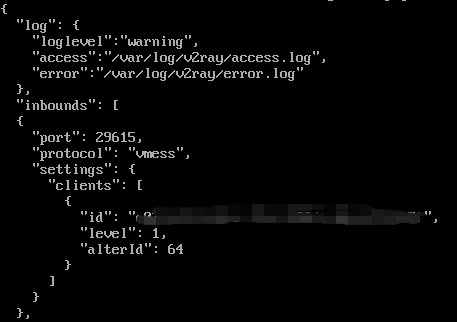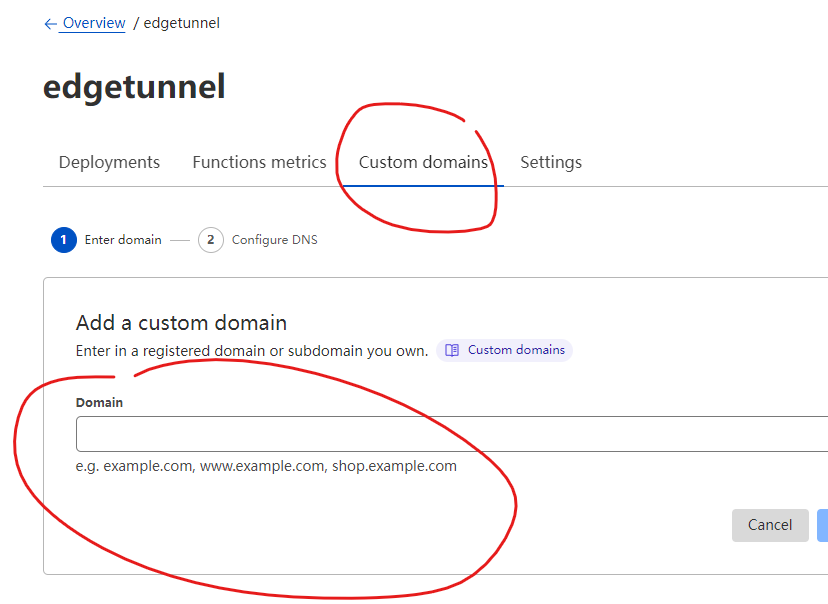

- #CLOUDFLARE TUNNEL V2RAY HOW TO#
- #CLOUDFLARE TUNNEL V2RAY ANDROID#
- #CLOUDFLARE TUNNEL V2RAY SERIES#
- #CLOUDFLARE TUNNEL V2RAY FREE#
#CLOUDFLARE TUNNEL V2RAY HOW TO#
Confronted with the 'SSL Handshake Failed' error? 🤝 Get a grip on how to solve it with these 5 methods ⤵️ Click to Tweet Understanding What Causes SSL Handshake FailuresĪn SSL Handshake Failure or Error 525 means that the server and browser were unable to establish a secure connection. That means there are many different opportunities for something to go wrong and cause a handshake failure, or even lead to the “ your connection is not private” error, causing visitors to leave. Plus, there are a lot of moving parts involved in the process. This can pose a significant security risk. To make a long story short, without the SSL handshake, a secure connection won’t be made. The computer then generates a key and encrypts it, using the public key sent from the server. After the request is sent, the server sends a public key to your computer and checks that key against a list of certificates. Let us explain: the client (typically the browser) sends a request for a secure connection to the server.
#CLOUDFLARE TUNNEL V2RAY SERIES#
To authenticate and establish the connection, the user’s browser and the website’s server must go through a series of checks (the handshake), which establish the HTTPS connection parameters. With that out of the way, an SSL handshake is the first step in the process of establishing an HTTPS connection. The terms are often used interchangeably, so for simplicity’s sake, we’ll use “SSL” to refer to both. We won’t get too in-depth about the difference between TLS vs SSL since it’s a minor one. SSL certificates are needed in order to secure your website using HTTPS. Secure Sockets Layer (SSL) and Transport Layer Security (TLS) are protocols used to authenticate data transfers between servers and external systems such as browsers.
#CLOUDFLARE TUNNEL V2RAY FREE#
As for why they bother with a free plan with such cryptic rules, their S1 explains it.Before we dig deeper into what causes a TLS or SSL handshake failure, it’s helpful to understand what the TLS/SSL handshake is. If the subdomain is some website that is primarily used in the browser, CF will generally be fine leaving it up even if you push TBs a day, but if it's just a file host CF has been known to flag that for abuse and disable proxying for the domain. If you're referring to the TOS issue that is often discussed here, it depends on what that subdomain is, since Cloudflare doesn't just want to be pushing binary data for free. If you just want to try tunnels at all, with a non-descript hostname, Tunnel gives out subdomains that end in. Unless you want to pay for the business plan with a CNAME Setup, you do need to use their DNS offering, even if the rest of your site's DNS records are 'unproxied'. Do the boring bits so it can be even better than the primary offering. In other words, the hard part of this offering is done. And maybe even really open-source the tunnel client for real, because it would be quite nice to have the actual origin server connect via a plugin instead of a separate daemon. And the pane for managing website origin servers could let you choose between the traditional cloudflare-initiated connection and a tunnel, and the tunnel mode could give some controls for how the origin server is protected, whether connections load balance across multiple tunnels, etc. Hey jgc et all, if you’re reading this, maybe the cloudflare console UI could have a pane for managing tunnels. Unfortunately, cloudflare tunnels feel a bit like a cute 20% project that was never quite finished and is barely integrated with the rest of cloudflare’s offering. In principle, there is no reason at all to use TLS inside the tunnel - the tunnel itself is authenticated and encrypted. If only there was a straightforward way to manage the credentials used by cloudflared for tunnels, bind them to specific websites, and revoke them. I'm hopeful for the Pinephone, but we have a long way to go. I'm fine with sane defaults, but it should be easy to switch them off. We need a mobile OS that respects the user's control over their device.
#CLOUDFLARE TUNNEL V2RAY ANDROID#
Overall I consider Android to be a very hostile environment for native applications, and networked apps in particular. One example I would see huge performance differences as soon as I turned the screen off. * Android has endless optimizations for battery life that are trying to shut down/throttle your program.

* You have to do weird hacks in order to run native applications such as Golang programs. I solved this by setting DNS servers manually to 1.1.1.1, 8.8.8.8, etc. * DNS name resolution doesn't work by default (with Golang at least) because android doesn't use nf.

Not a problem in theory but annoying to implement. * You have to run it as a foreground service so the user knows it's running. There are countless hoops to jump through for running server software, including: I spent considerable time last year porting boringproxy to run on Android.


 0 kommentar(er)
0 kommentar(er)
